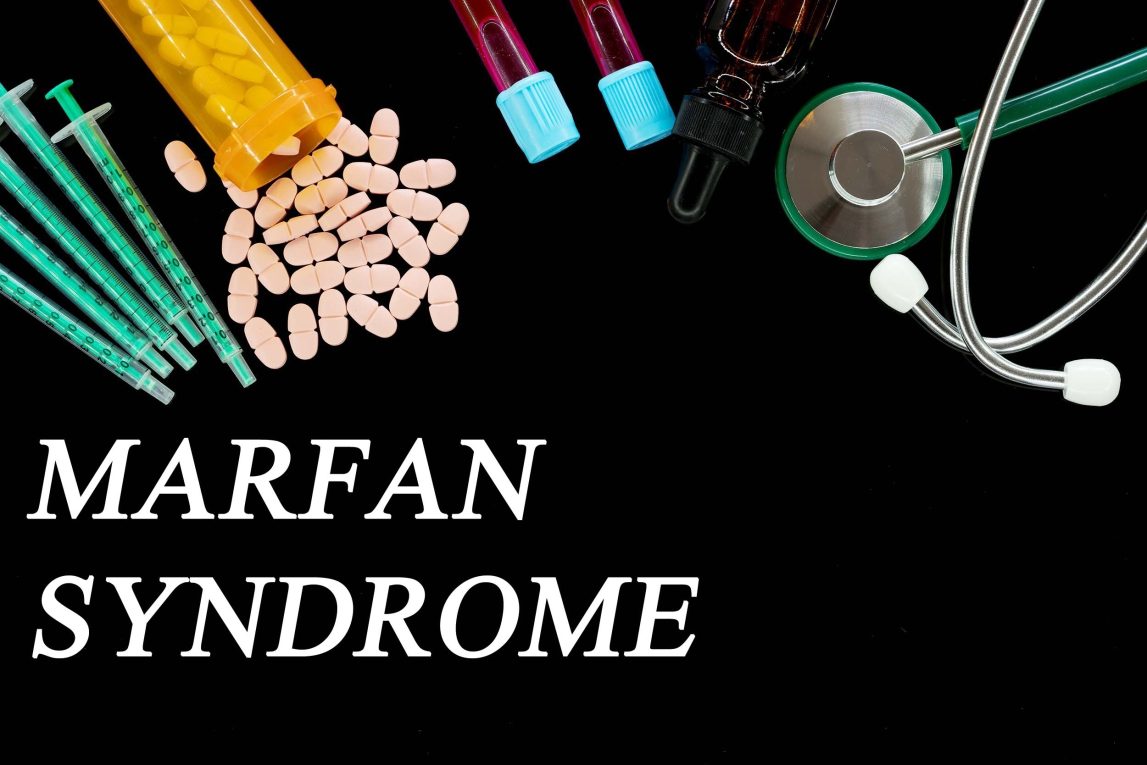February is recognized as Marfan Syndrome Awareness Month, a time dedicated to increasing awareness about this genetic disorder and encouraging early diagnosis and treatment. Omega Hospitals is committed to educating the public about Marfan syndrome and providing comprehensive care to affected individuals.
Overview:
Marfan syndrome (MFS) is an autosomal dominant genetic problem that impacts connective tissues, giving support to the body and organs. MFS can cause classic ocular, cardiovascular, and musculoskeletal abnormalities, although lung, skin, and central nervous system involvement may also occur. Reduced life expectancy is mainly due to aortic complications, such as aortic root dilation and dissection.
Marfan syndrome causes:
Marfan syndrome is uncommon, happening in about 1 in 5,000 people. It occurs due to a gene mutation called FBN1. This mutation restricts the body’s ability to produce proteins required to build connective tissues. The likelihood that a person with Marfan syndrome will pass it on to their child is one in two.
Marfan Syndrome Symptoms:
The symptoms of MFS can vary widely from mild to severe. The disorder affects multiple systems in the body, including the skeletal, cardiovascular, ocular, and respiratory systems.
- Skeletal System Symptoms
- Tall and thin stature: People with Marfan syndrome tend to be unusually tall and have long limbs.
- Long fingers and toes (arachnodactyly): Their fingers and toes may be disproportionately long.
- Curved spine (scoliosis or kyphosis): Many individuals develop an abnormal curvature of the spine.
- Chest deformities: The chest may protrude outward (pectus carinatum) or appear sunken inward (pectus excavatum).
- Joint hypermobility: Loose and overly flexible joints are common.
- Flat feet: Many individuals experience problems with foot alignment.
- Cardiovascular System Symptoms
- Aortic aneurysm (enlargement of the aorta): The most serious complication is the weakening and enlargement of the aorta, which can cause a serious aortic dissection.
- Aortic dissection: A dangerous condition where the aorta tears, leading to severe internal bleeding.
- Mitral valve prolapse: Causes irregular heartbeats (arrhythmias) and heart murmurs.
- Increased risk of sudden cardiac events: Without proper monitoring and treatment, cardiovascular complications can be fatal.
- Ocular Symptoms
- Lens dislocation (ectopia lentis): More than 60% of individuals with Marfan syndrome experience displacement of the eye’s lens.
- Severe myopia (nearsightedness): Many people develop extreme nearsightedness early in life.
- Retinal detachment: The chance of retinal detachment is significantly higher.
- Early cataracts or glaucoma: These eye conditions can develop earlier than in the general population.
- Respiratory System Symptoms
- Collapsed lung (spontaneous pneumothorax): Weakened lung tissue can cause part of the lung to collapse, leading to breathing difficulties.
- Sleep apnea: Structural issues can contribute to breathing problems during sleep.
Marfan Syndrome Diagnosis:
Marfan syndrome symptoms can vary a lot. Your healthcare providers must know about Marfan syndrome because its symptoms are similar to those of other related connective tissue diseases. MFS tests include:
- Echocardiogram: It involves a sound wave picture of the heart and aorta done by a cardiologist.
- Slit-lamp examination: It is conducted by an ophthalmologist to examine for dislocation of the ocular lens.
- Complete family history to find out if any relatives have other heart, bone, or eye problems.
- Examination of the skeletal system by an orthopaedist
- A genetic test is done to look for a mutation in the fibrillin-1 gene (FBN1).
Marfan syndrome treatment:
At present, there is no cure for Marfan syndrome. Regular check-ups and treatments with medications, physiotherapy, and surgery may vary based on the affected parts of the body and the severity of the damage. The MFS treatment options include:
- Cardiovascular: Beta-blockers, ARBs, regular heart monitoring, and aortic root surgery if needed.
- Skeletal & Orthopedic: Bracing, corrective surgeries, physical therapy, and pain management.
- Ocular: Glasses, contact lenses, surgery for lens dislocation, or glaucoma management.
- Making changes to everyday living habits, like staying away from contact sports and vigorous exercises, can lower the risk of damaging the aorta.
- Frequent echocardiogram tests to observe heart and aorta conditions.
- Frequent eye tests and treatment
- Routine check-ups to check the skeleton and suggest corrective treatment if necessary. It is mainly vital during the growth spurt of puberty.
Marfan syndrome complications:
Among the multisystem complications of MFS are
- Aortic aneurysm and dissection
- Mitral regurgitation
- Mitral valve prolapse
- Aortic regurgitation
- Inguinal hernias
- Scoliosis
- Cataract, glaucoma, and retinal detachment
- Lens subluxation (ectopia lentis)
- Spontaneous pneumothorax
Frequently Asked Questions (FAQs)
1. Is Marfan syndrome life-threatening?
Marfan syndrome can be life-threatening if it affects the heart and blood vessels, particularly if the aorta enlarges or tears. However, with proper medical care, many individuals live long and healthy lives.
2. Can Marfan syndrome be cured?
Currently, there is no cure for Marfan syndrome, but early diagnosis and appropriate treatment can help manage symptoms and prevent complications.
3. Is Marfan syndrome always inherited?
Marfan syndrome is usually inherited in an autosomal dominant pattern, but about 25% of cases result from new mutations with no family history.
4. What activities should people with Marfan syndrome avoid?
High-impact sports, heavy lifting, and activities that stress the heart and joints excessively should be avoided.
5. Can Marfan syndrome affect mental health?
Yes, individuals with Marfan syndrome may experience anxiety or depression due to chronic health issues. Psychological support and counselling can be beneficial.
6. How early can Marfan syndrome be diagnosed?
Marfan syndrome can often be diagnosed in childhood or adolescence through genetic testing and clinical evaluations.

